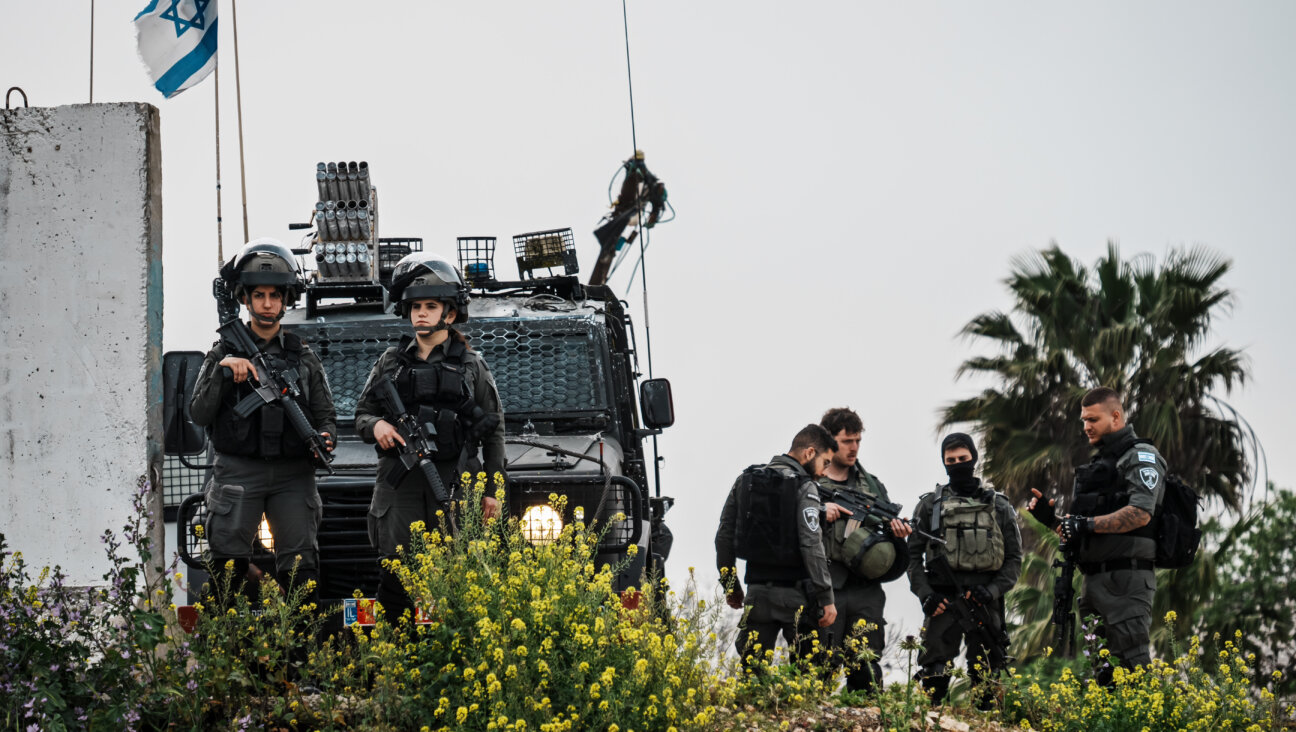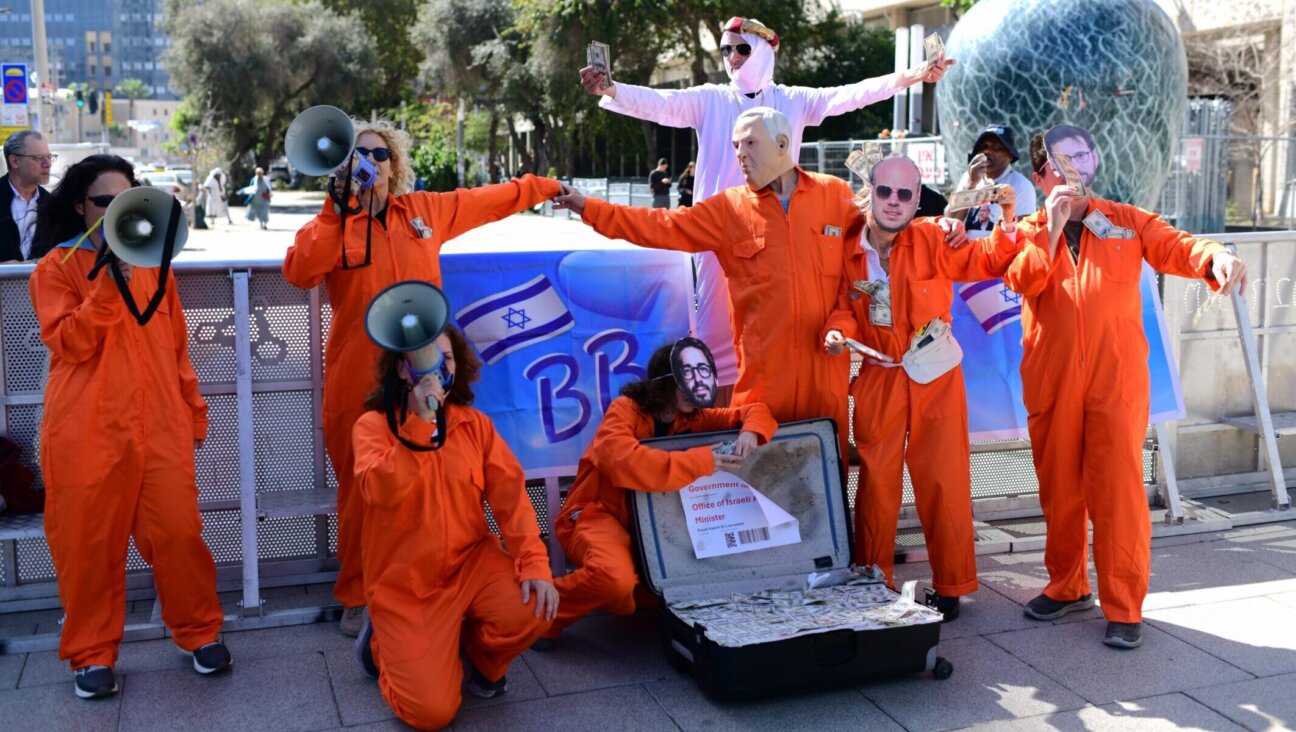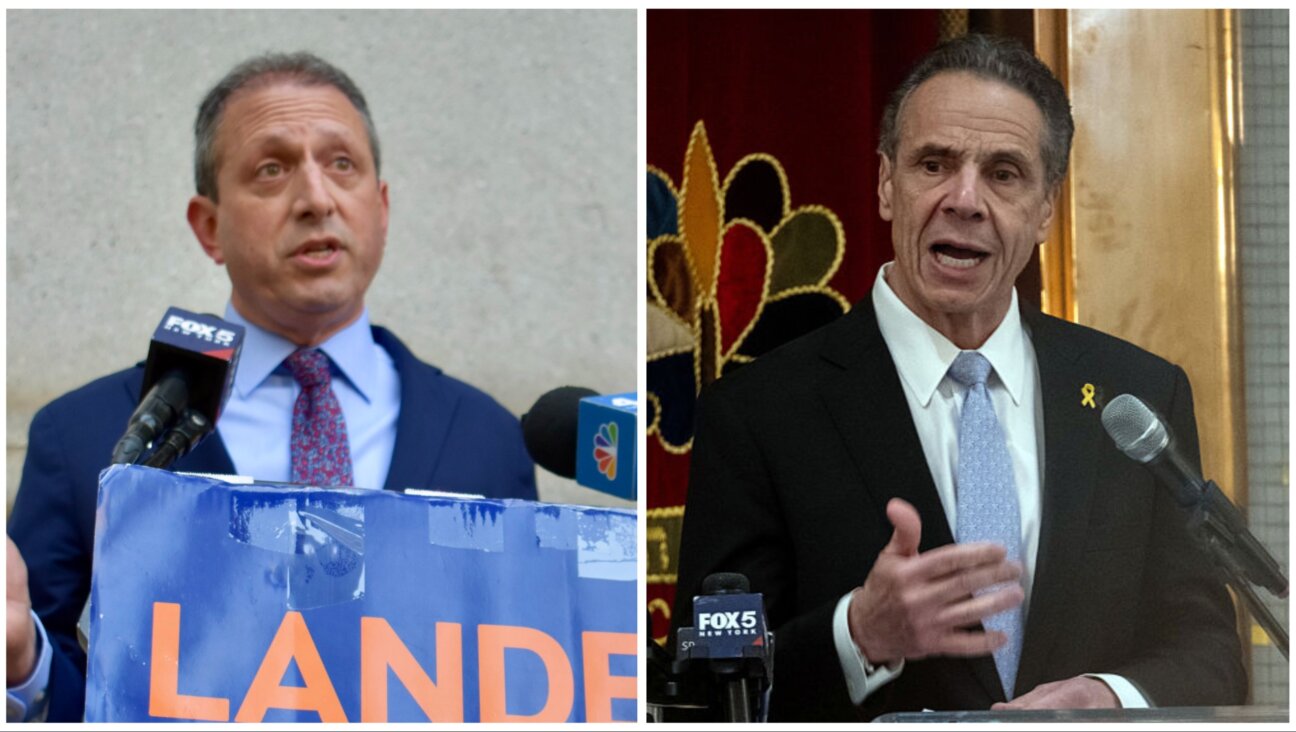Nazi collaborator monuments in the Czech Republic
Overlooking the Jizera Mountains is a massive granite statue of the 1939 Iron Cross, the Second Class Nazi military award
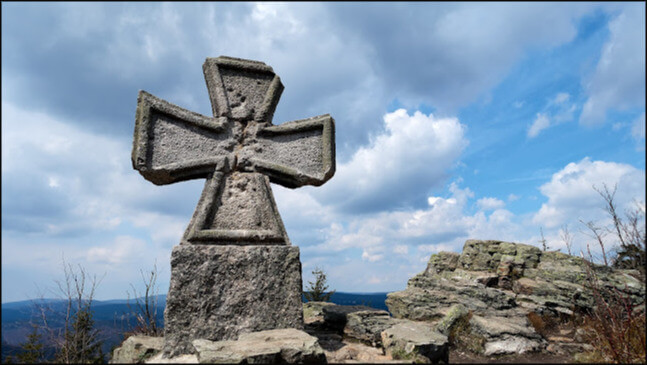
Iron Cross monument, Kořenov (Google maps) Image by Lev Golinkin
This list is part of an ongoing investigative project the Forward first published in January 2021 documenting hundreds of monuments around the world to people involved in the Holocaust. We are continuing to update each country’s list; if you know of any not included here, or of statues that have been removed or streets renamed, please email [email protected], subject line: Nazi monument project.
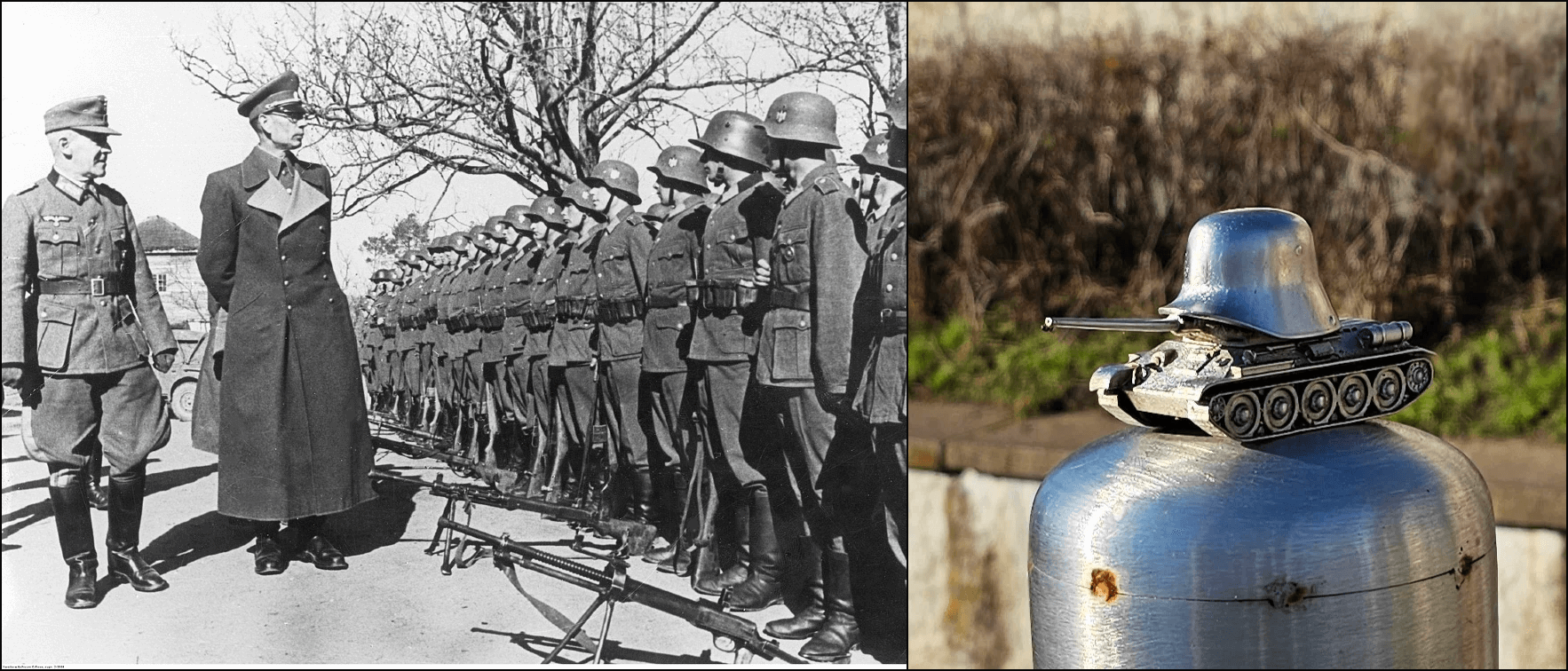
Prague and Lnáře — In the Czech Republic’s capital is a strange monument consisting of a slender nine-foot pole topped with the tiny statue of a tank covered with a helmet. The tank is a T-34 Soviet model; the helmet is that of Nazi Germany. This monument, erected in 2021, is to the Russian Liberation Army (ROA), a Russian collaborationist formation in the Third Reich.
The ROA was led by Andrey Vlasov, a Soviet general who defected to Germany. Toward the end of the war, with Germany losing, Vlasov began looking to switch sides once more. In May 1945, the 1st Division of the ROA defected from German service and allied itself with Czech resistance fighters in the bloody uprising to liberate Prague from the Nazis. The Prague monument is to that 1st Division of the ROA, which lost around 300 soldiers in the campaign. Ostensibly the monument is not intended to honor Vlasov himself who had not authorized the 1st Division to aid in the Prague uprising. Vlasov also has a memorial plaque outside the Lnáře Castle in Lnáře.
See the Germany and U.S. sections for memorials to Vlasov and the ROA and the Russia section for a monument to other Russian collaborators.
(Note: The Lnáře plaque was added March 2024.)
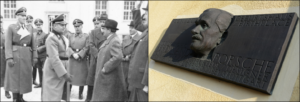
Liberec — A plaque commemorating Ferdinand Porsche (1875–1951) on his birth house in the village of Vratislavice nad Nisou, a district of Liberec. Liberec itself has another plaque on Porsche’s old school. Porsche, who designed the eponymous car line and the Volkswagen Beetle, was a member of the Nazi Party, an officer (SS-Obersturmführer) in the SS, and a favorite of Hitler. In addition to giving the Führer weapons like the infamous Tiger tank, Porsche used slave labor, building his wealth off of concentration camp prisoners. He remained unrepentant about it.
Unlike many towns which defend their collaborator monuments, Vratislavice residents have spoken out against whitewashing Porsche’s past. In 2013, the village removed plaques touting it as Porsche’s birthplace while its mayor condemned the designer’s collaboration. Pushback also came from Jewish groups and WWII veterans who had been on the receiving end of Porsche’s weapons, as detailed in stories in the Times of Israel and the Irish Times. Above left, Porsche (second from right) meets with Nazi brass in Vienna. On the left is Ernst Kaltenbrunner, one of the main organizers of the Holocaust who was executed for crimes against humanity in Nuremberg. Below, soldiers in front of a disabled Elefant tank destroyer, 1944; these machines were nicknamed “Ferdinand” for their designer. For more Porsche monuments, see the Austria, Germany and U.S. sections.
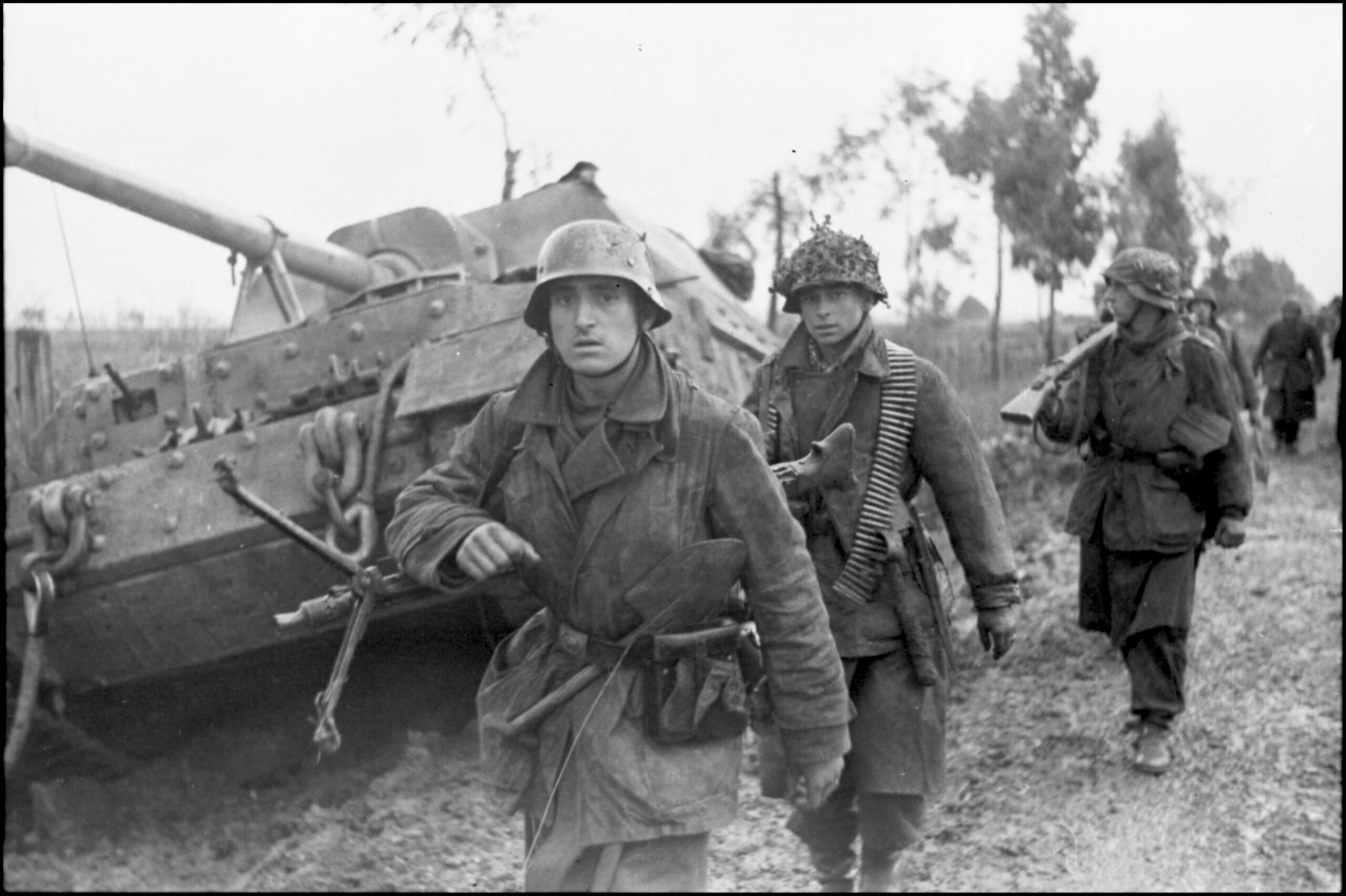
***
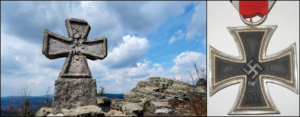
Update (August 2023): In March 2023, unknown individuals toppled the cross from its pedestal, breaking it into several pieces. In April, the pieces were taken into storage by a local national park museum; the pedestal remains in its original location. Two museums expressed interest in restoring and keeping the monument, but no decision has been made and its future remains unclear. See coverage in iDNES.cz (Google translation here and here). Thanks to Josef Doškář for help in tracking this development.
Kořenov — In the Jizera Mountains, amid a row of stones in the shadow of a watchtower that looks like it’s out of Game of Thrones, stands a massive stone cross overlooking the mountains beyond. The cross is a granite statue of the 1939 Iron Cross, Second Class Nazi military award. According to research, the cross, which originally had a swastika in its center, was erected in October 1944 as a memorial to fallen Third Reich soldiers. The memorial also included a group of stones symbolizing tombstones. It was deemed important enough to be inaugurated by Konrad Henlein, the Reichsstatthalter (governor) of the Sudetenland, where Kořenov was located.
In May 1945, immediately after Germany’s surrender, the swastika was chipped off with gunfire (you can still see faint traces of it, above left); a month later, the cross was thrown down from its pedestal. It remained lying in several pieces until 2011, when a questionable group reassembled and reinstalled it, often working in the middle of the night. The stones near the cross were rearranged into a large arc. Since then, the site has seen meetings of far-right groups.
The most complete history of this strange memorial has been made clear thanks to the archival research of Josef Doškář who unearthed, among other things, the role played by Henlein. See his site (Google translation here) with reports on the memorial’s history, restoration and use by far-right groups. (Google translation here, here and here). In 2021, the monument was vandalized with swastikas (Google translation here).
See coverage in Lidovky.cz (Google translation here); compilation of coverage by Drobné památky monument database (Google translation here); and protest by the Association of Liberated Political Prisoners and Survivors (Google translation here).

